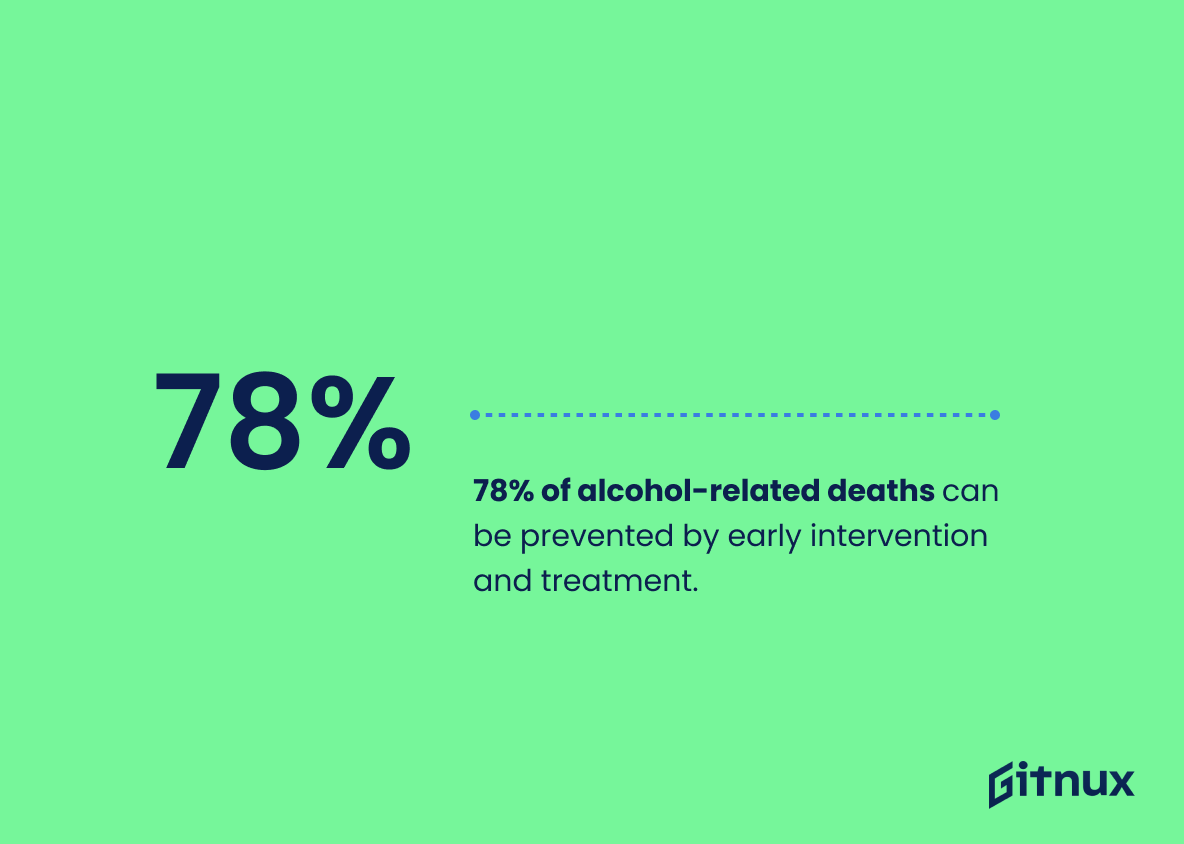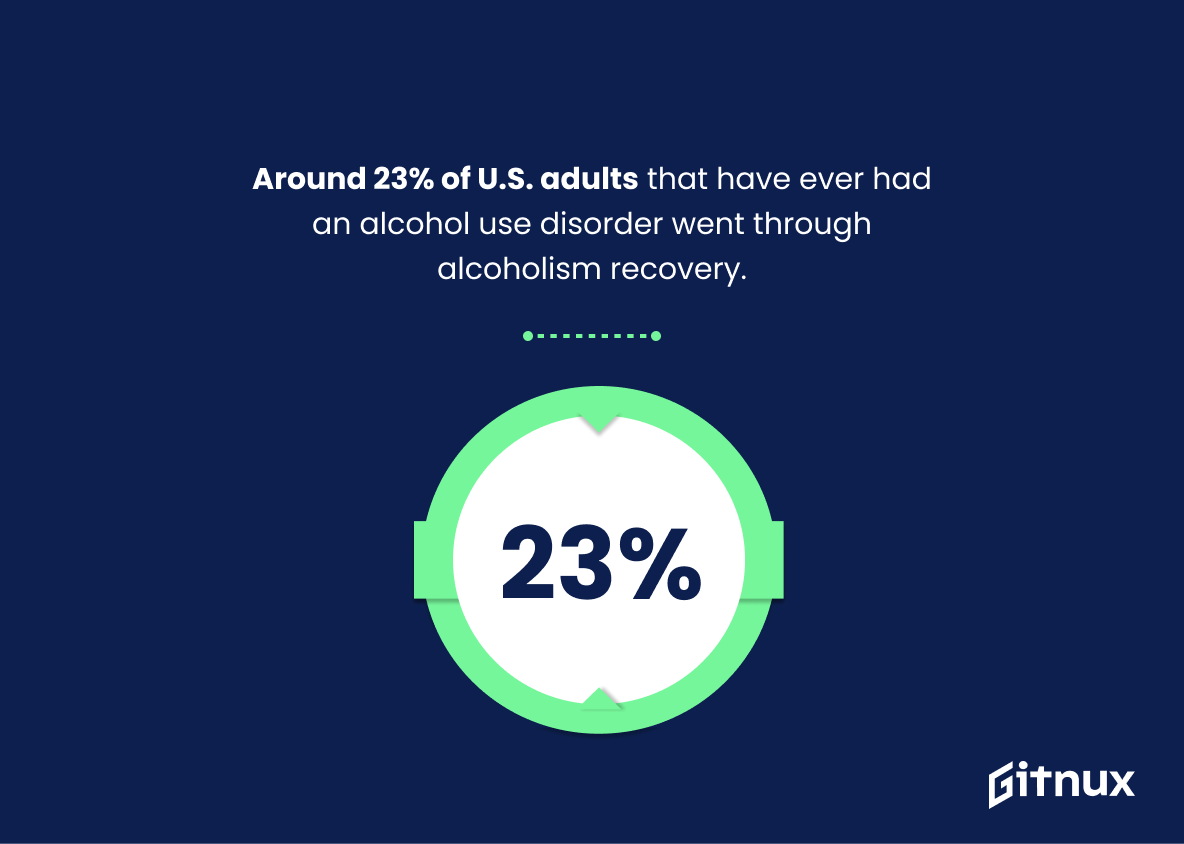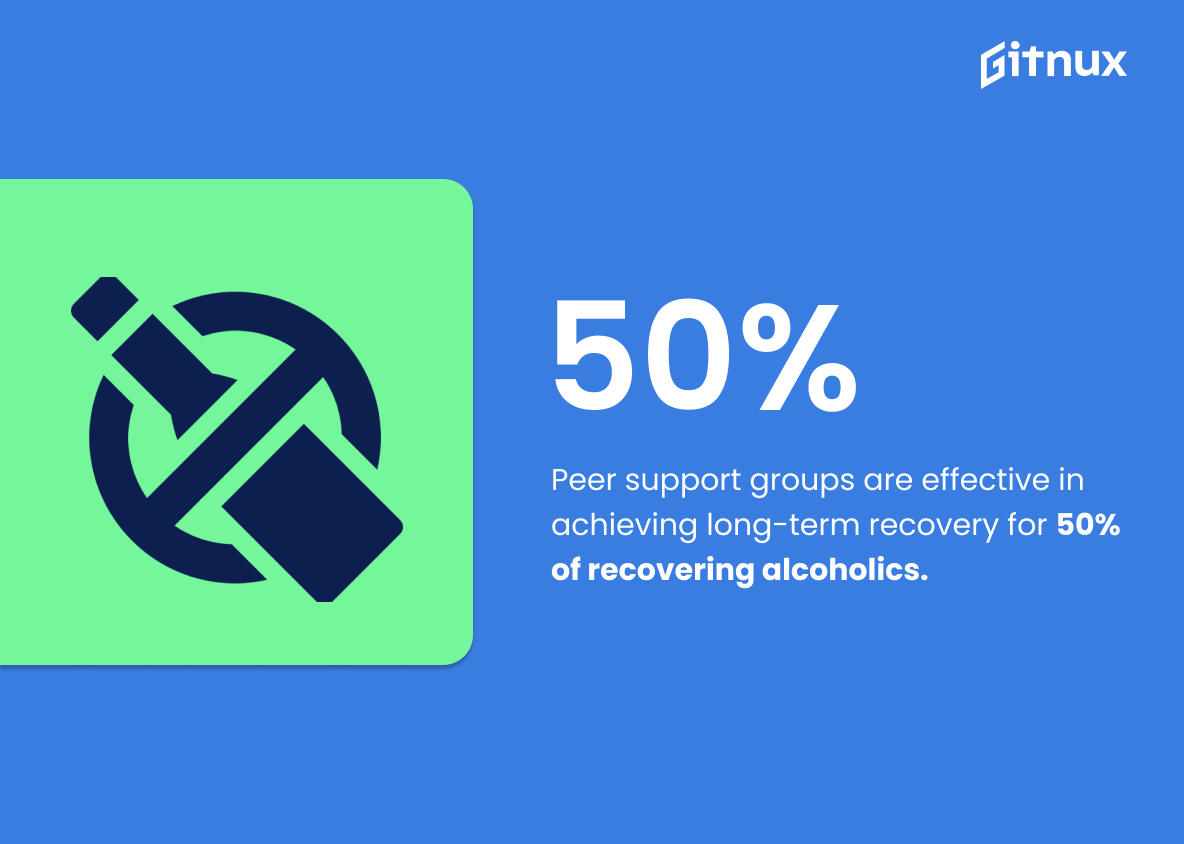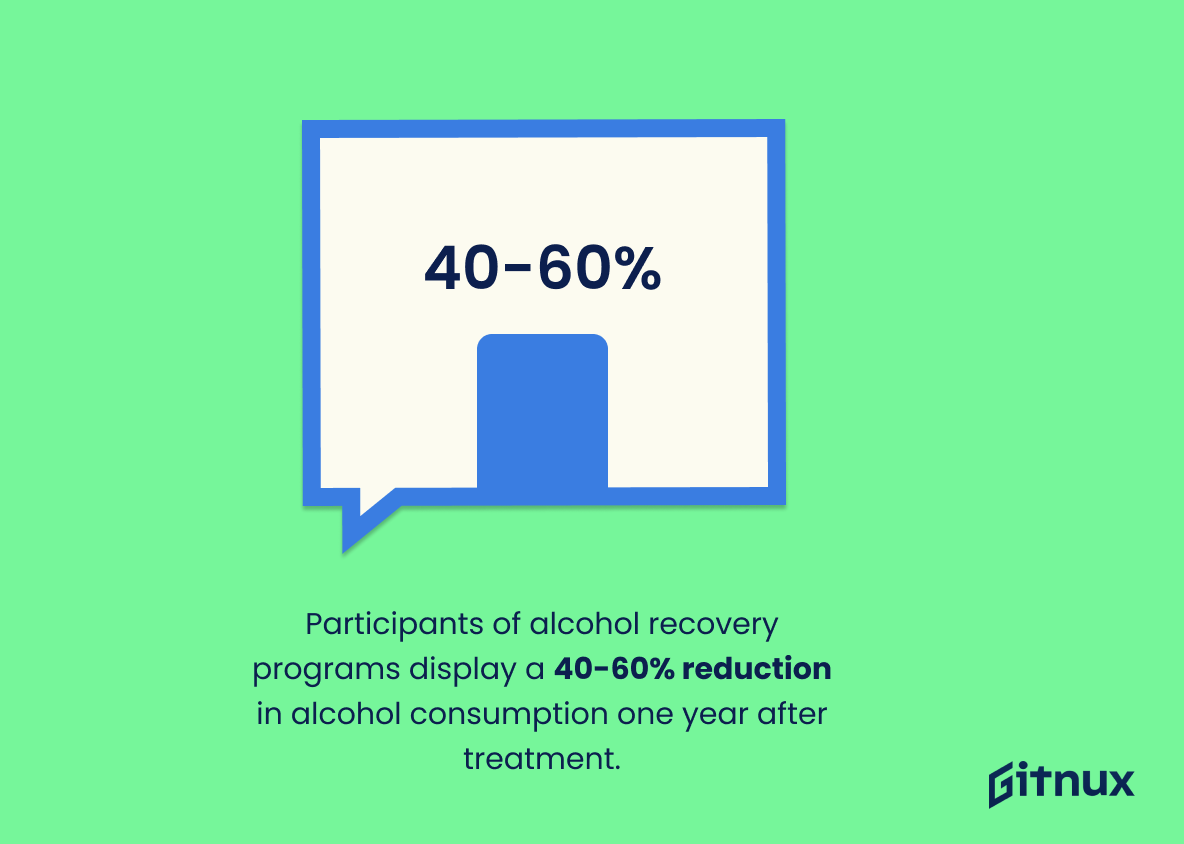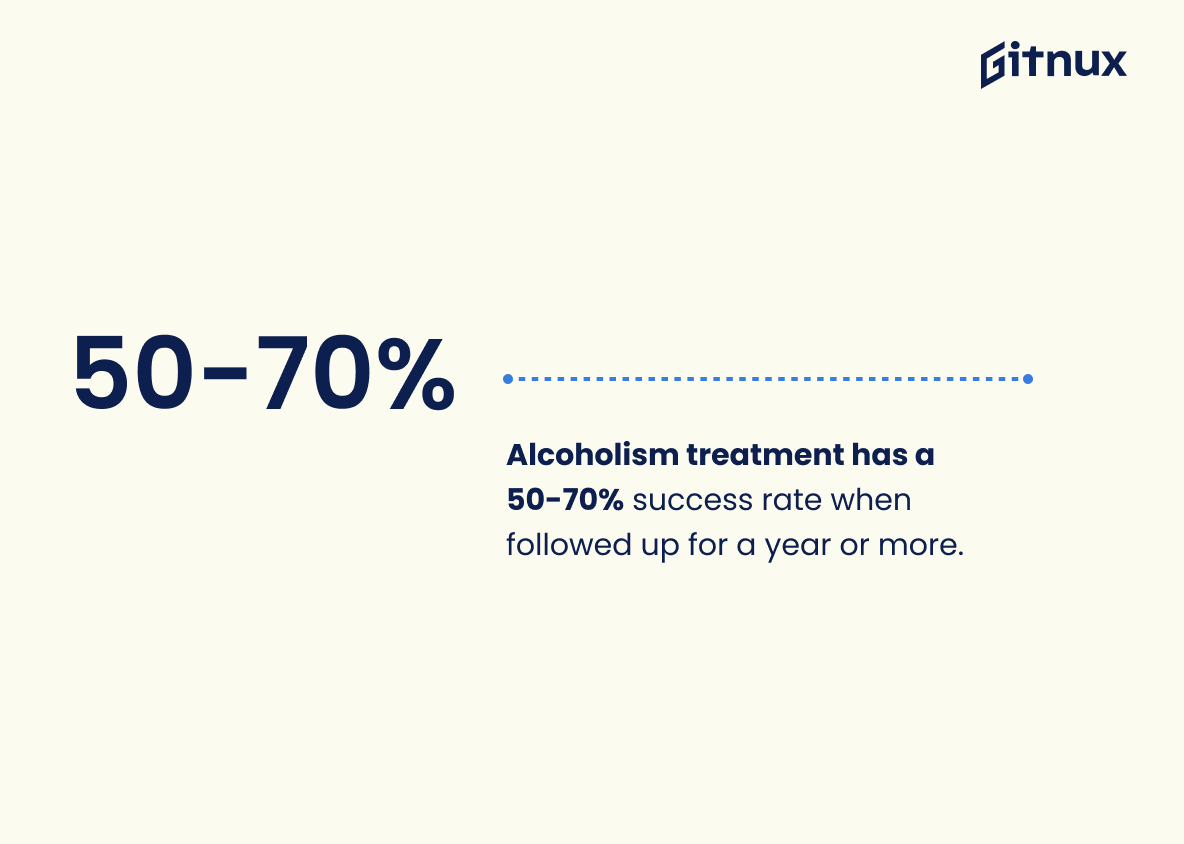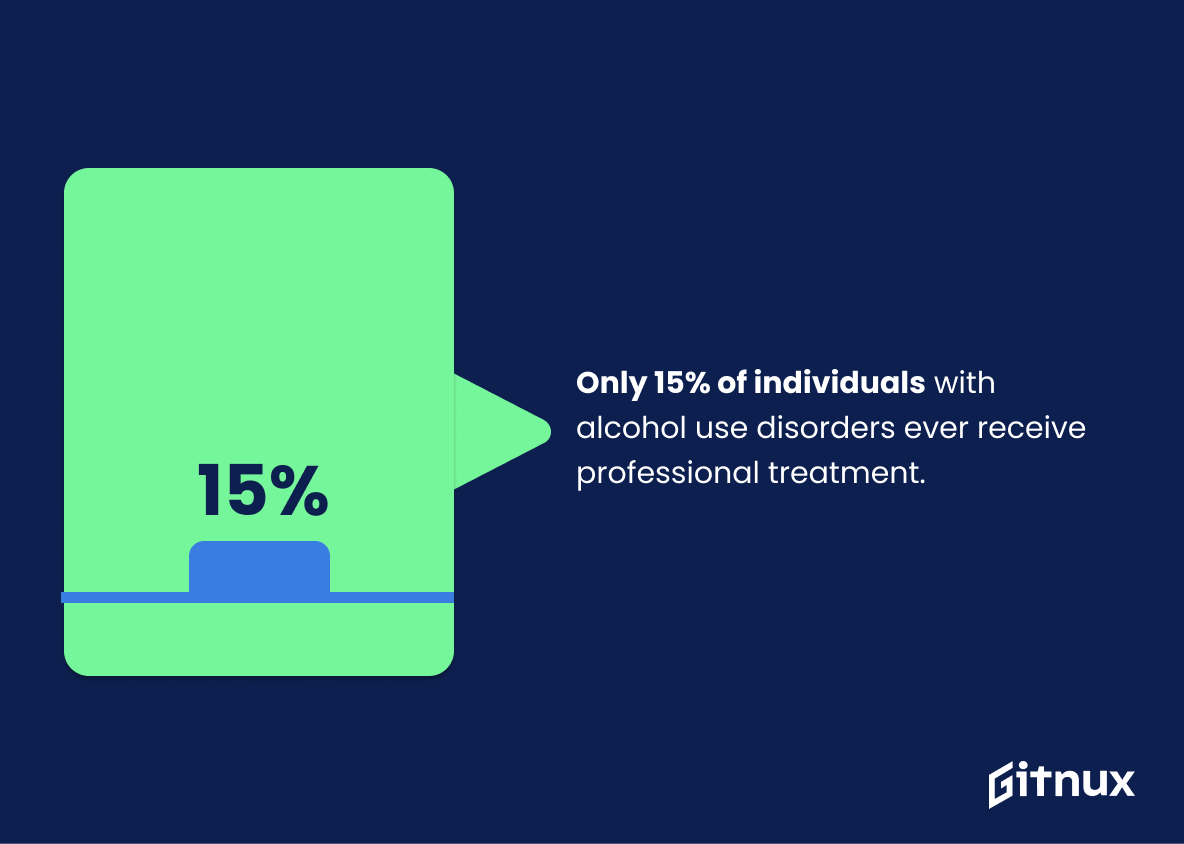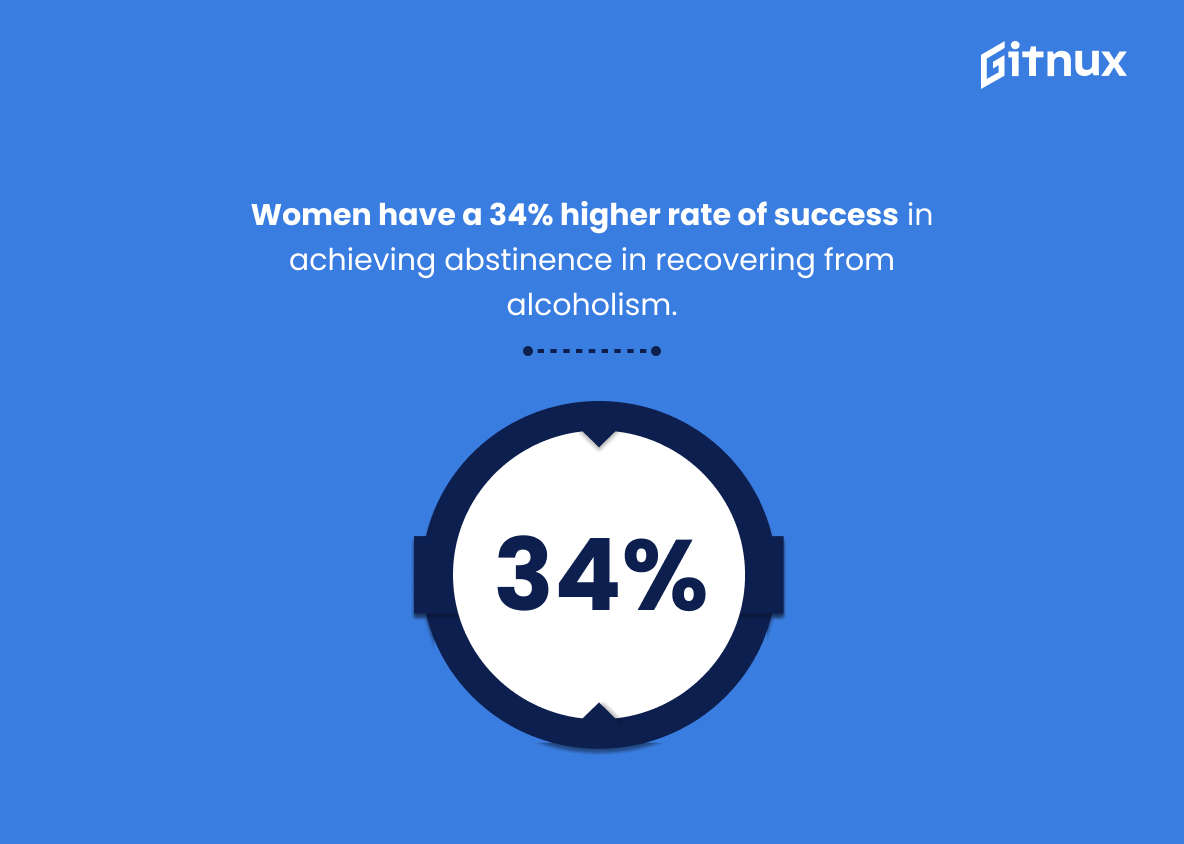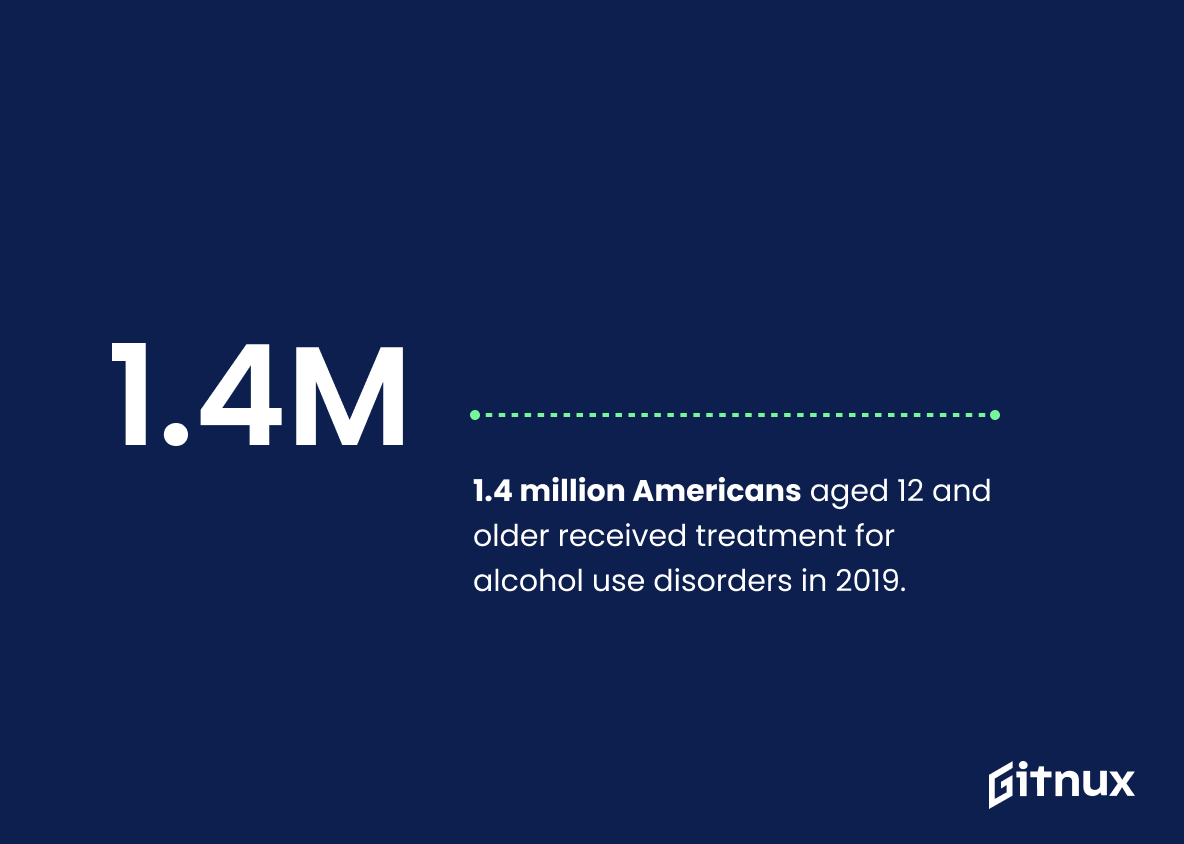Alcoholism is a serious problem that affects millions of people around the world. Recovery from alcoholism can be difficult, but it is possible with the right support and resources. In this blog post, we will explore some statistics about alcoholism recovery to gain insight into how successful treatment programs are in helping individuals achieve long-term sobriety.
We’ll look at data on relapse rates, success rates for different types of treatments, and other factors related to alcohol use disorder recovery. By understanding these numbers better, we can get an idea of what works best when it comes to treating addiction and supporting those who are struggling with substance abuse issues.
This statistic is a stark reminder of the difficulty of recovering from alcoholism. It highlights the need for continued support and resources for those in recovery, as well as the importance of understanding the risks of relapse. It also serves as a reminder that recovery is a long-term process and that relapse is a real possibility.
It is estimated that 32% of individuals with alcohol use disorder are in recovery.
This statistic is a powerful reminder that recovery from alcohol use disorder is possible. It shows that a significant portion of individuals with alcohol use disorder have been able to make progress in their recovery journey. This statistic is a beacon of hope for those struggling with alcohol use disorder, and it serves as a reminder that recovery is achievable.
Alcoholism Recovery Statistics Overview
62% of clients completing alcohol addiction treatment maintain abstinence one year after treatment.
This statistic is a powerful testament to the efficacy of alcohol addiction treatment. It shows that, with the right help, individuals can make a lasting recovery from alcoholism and maintain abstinence for a full year after treatment. This is an encouraging sign for those struggling with alcohol addiction, as it demonstrates that recovery is possible.
A 16-year study found those who attend AA meetings have a 67% recovery rate.
This statistic is a powerful testament to the effectiveness of Alcoholics Anonymous meetings in helping individuals recover from alcoholism. It shows that, over the course of 16 years, those who attended AA meetings had a significantly higher rate of recovery than those who did not. This is an invaluable piece of information for anyone looking to find a successful path to recovery from alcoholism.
78% of alcohol-related deaths can be prevented by early intervention and treatment.
This statistic is a powerful reminder of the importance of early intervention and treatment when it comes to alcohol-related deaths. It highlights the potential for lives to be saved if individuals are able to access the help they need in time. It also serves as a call to action for those in a position to provide support and resources to those struggling with alcohol addiction.
One in 10 outpatient substance use treatment programs offer alcohol recovery services.
This statistic is a stark reminder of the prevalence of alcohol addiction and the need for more alcohol recovery services. It highlights the fact that, despite the growing awareness of the dangers of alcohol abuse, there is still a lack of resources available to those seeking help. This statistic serves as a call to action for those in the medical and recovery communities to work together to provide more comprehensive alcohol recovery services.
Around 23% of U.S. adults that have ever had an alcohol use disorder went through alcoholism recovery.
This statistic is a powerful reminder of the importance of alcoholism recovery. It highlights the fact that a significant portion of adults in the U.S. have experienced an alcohol use disorder and have gone through the process of recovery. This statistic serves as a reminder that recovery is possible and that there is hope for those struggling with alcohol addiction.
Peer support groups are effective in achieving long-term recovery for 50% of recovering alcoholics.
This statistic is a powerful testament to the efficacy of peer support groups in helping recovering alcoholics achieve long-term sobriety. It demonstrates that, with the right support, half of all recovering alcoholics can successfully overcome their addiction and lead healthier, more fulfilling lives. This statistic is a beacon of hope for those struggling with alcoholism, and a reminder that recovery is possible.
Participants of alcohol recovery programs display a 40-60% reduction in alcohol consumption one year after treatment.
This statistic is a powerful testament to the effectiveness of alcohol recovery programs. It demonstrates that with the right support and guidance, individuals can make significant progress in reducing their alcohol consumption and taking back control of their lives. This statistic is an encouraging reminder that recovery is possible and that there is hope for those struggling with alcohol addiction.
Alcoholism treatment has a 50-70% success rate when followed up for a year or more.
This statistic is a powerful reminder of the potential for recovery from alcoholism when treatment is followed up for a year or more. It highlights the importance of long-term commitment to recovery, and the potential for success when that commitment is made. It also serves as a beacon of hope for those struggling with alcoholism, showing that recovery is possible and that there is a light at the end of the tunnel.
Only 15% of individuals with alcohol use disorders ever receive professional treatment.
This statistic is a stark reminder of the prevalence of alcohol use disorders and the lack of access to professional treatment. It highlights the need for more resources to be made available to those struggling with alcohol use disorders, as well as the need for greater awareness of the issue and the importance of seeking help.
Women have a 34% higher rate of success in achieving abstinence in recovering from alcoholism.
This statistic is a powerful reminder that women have the potential to be successful in their recovery from alcoholism. It highlights the importance of providing women with the necessary resources and support to help them in their journey to sobriety. It also serves as a reminder that recovery is possible and that women should not be discouraged from seeking help. This statistic is a testament to the strength and resilience of women in overcoming addiction and should be celebrated.
Long-term recovery from alcoholism increases to 58% when treatment includes more than 27 therapy sessions.
This statistic is a powerful reminder that the road to recovery from alcoholism is a long and arduous one, and that the more effort put into treatment, the more likely it is to be successful. It highlights the importance of committing to a comprehensive treatment plan, and the potential for a successful recovery when the necessary steps are taken.
More than 50% of individuals in alcoholism recovery remain abstinent beyond eight years.
This statistic is a testament to the power of recovery from alcoholism. It shows that with the right support and dedication, individuals can make lasting changes in their lives and remain abstinent for extended periods of time. This statistic is a beacon of hope for those struggling with alcoholism, and it serves as a reminder that recovery is possible.
1.4 million Americans aged 12 and older received treatment for alcohol use disorders in 2019.
This statistic is a stark reminder of the prevalence of alcohol use disorders in the United States. It highlights the need for more resources and support for those struggling with alcohol addiction, as well as the importance of prevention and early intervention. It also serves as a reminder of the devastating impact that alcohol use disorders can have on individuals, families, and communities.
After one year of abstinence, recovery rates from alcoholism reach 80-90%.
This statistic is a beacon of hope for those struggling with alcoholism, showing that recovery is possible. It demonstrates that with dedication and commitment, individuals can make significant progress in their recovery journey. This statistic is a reminder that recovery is achievable and that there is light at the end of the tunnel.
Rates of recovering alcoholics who commit suicide are lower (5%) than rates for actively drinking alcoholics (20%).
This statistic is a powerful reminder of the importance of recovery in the fight against alcoholism. It shows that those who take the steps to get sober are far less likely to take their own lives than those who remain actively drinking. This is a testament to the power of recovery and the hope it can bring to those struggling with alcoholism.
The 10-year cumulative abstinence rate among recovering alcoholics is 57%.
This statistic is a testament to the hard work and dedication of recovering alcoholics, showing that with the right support and resources, long-term sobriety is achievable. It serves as a beacon of hope for those struggling with alcoholism, demonstrating that recovery is possible and that there is a light at the end of the tunnel.
Around 35% of individuals who completed addiction treatment programs for alcohol use disorders reported improved employment status after one year.
This statistic is a powerful testament to the positive impact that addiction treatment programs can have on individuals’ lives. It shows that, with the right support, individuals can make significant progress in their recovery journey and gain meaningful employment opportunities. This statistic is a reminder that recovery is possible and that individuals can take back control of their lives.
Conclusion
The statistics presented in this blog post demonstrate that alcoholism recovery is possible and can be successful. While relapse rates are high, there are many resources available to help individuals achieve long-term sobriety. Treatment programs such as outpatient care, peer support groups, and Alcoholics Anonymous meetings have been shown to increase the chances of success for those seeking recovery from alcohol use disorder.
Additionally, early intervention has been proven effective in preventing alcohol-related deaths. With access to these services and a commitment to abstinence, individuals with an alcohol use disorder can find hope for lasting recovery from their addiction.
References
0. – https://www.www.niaaa.nih.gov
1. – https://www.www.verywellmind.com
2. – https://www.www.usatoday.com
3. – https://www.www.samhsa.gov
4. – https://www.www.drugabuse.gov
5. – https://www.www.alcohol.org
6. – https://www.www.rehabs.com
7. – https://www.aaagnostica.org
8. – https://www.www.addictioncenter.com
9. – https://www.pubs.niaaa.nih.gov
10. – https://www.pubmed.ncbi.nlm.nih.gov
11. – https://www.www.ncbi.nlm.nih.gov
12. – https://www.www.healio.com
13. – https://www.www.the-scientist.com
14. – https://www.americanaddictioncenters.org


